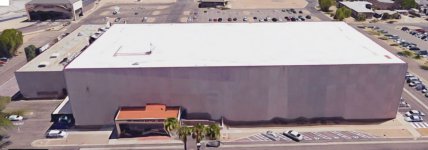This has happened before, here's the story from author and historian Sean Munger.
If you grew up in the 60s, 70s or 80s in the United States, you’re probably very familiar with these words: “This is a test of the Emergency Broadcast System. This is only a test.” Then your radio or TV would boop for about 30 seconds with a very unpleasant tone, and your show would come back. Maybe you understood that the Emergency Broadcast System (EBS) was a national government-run network designed to break into every possible local broadcast in America to report a national threat–nuclear war, most likely–and give instructions. Although the tests were ubiquitous, the EBS was never used on a national level during the entire Cold War…except for one time, and by accident.
It happened on February 20, 1971. On that Saturday morning at 9:33 AM Eastern time, Telex machines in every broadcast station in America that was part of the EBS suddenly rang urgently with ten successive bells–a signal only used for an imminent EBS warning–and then spat out a sheet reading, “This is an Emergency Action Notification directed by the president. Normal broadcasting will cease immediately.” The telex included the code word, “Hatefulness.”
This was a big deal, and very scary. The way EBS was supposed to work was, once stations received the notice, they were supposed to look up the code word in a book to make sure it was genuine, then, if it was, break into programming and announce something big was coming–possibly an address by the President of the United States. However, most stations who were part of the EBS were pretty slack. They either didn’t understand what the telex meant or didn’t know what to do when it came. A few, however, did follow the procedure. The code word “Hatefulness,” looked up in the book, was genuine. That meant the EBS had been triggered deliberately.
In the following minutes, many confusing messages emanated from Cheyenne Mountain, the Department of Defense base in Wyoming, to EBS-participating stations. They told the stations that the original telex was a false alarm, but there was also supposed to be another code word to authenticate a cancellation, and that code word–“impish”–was not included in the new telexes. Thus, under their rules, stations had to ignore them. Conceivably in a real war the Soviets might try to confuse the American public by sending out false messages, perhaps hoping to maximize civilian casualties in a sneak nuclear attack. Unlikely–and diabolical–but possible, and in that era of distrust, who knew?
At 10:13 AM, more than half an hour after the crisis began, Cheyenne Mountain finally sent a real cancellation message: “Cancel message sent at 09:33 EST, repeat cancel message. Message authenticator: Impish.” It was over. No Nixon, no nukes. The whole thing was a false alarm.
What happened? Actually, not much. An operator at Cheyenne Mountain put the wrong tape into the machine during a scheduled test of the EBS. The telex that went out should have instructed stations to conduct a test, and listeners should have heard the “This is just a test, booooooop” spiel. Instead, a lot of people were waiting to hear a radio or TV anchor announce the impending annihilation of humanity.
The false alarm was a major embarrassment for the FCC and the federal government. After several investigations, the system was overhauled and streamlined, eliminating potentially confusing procedures and messages. We will never know–fortunately–how the EBS would have functioned in a real nuclear war. In 1997 the EBS was replaced by the Emergency Alert System, which is what we have now.






